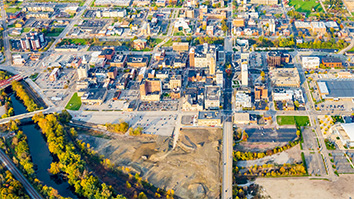Citation
Li, J. J., Ouellette, A. L., Giovangrandi, L., Cooper, D. E., Ricco, A. J., & Kovacs, G. T. (2008). Optical scanner for immunoassays with up-converting phosphorescent labels. IEEE Transactions on Biomedical Engineering, 55(5), 1560-1571.
Abstract
A 2-D optical scanner was developed for the imaging and quantification of up-converting phosphor (UCP) labels in immunoassays. With resolution better than 500 mum, a scan rate of 0.4 mm/s, and a 1-2% coefficient of variation for repeatability, this scanner achieved a detection limit of fewer than 100 UCP particles in an 8.8 times 10 4 mum 2 area and a dynamic range that covered more than three orders of magnitude. Utilizing this scanner, a microfluidic chip immunoassay for the cytokine interferon-gamma (IFN-gamma) was developed: concentrations as low as 3 pM (50 pg/mL) were detected from 100 muL samples with a total assay time of under an hour, including the 8 min readout. For this UCP-based assay, 2-D images of the capture antibody lines were scanned, image processing techniques were employed to extract the UCP emission signals, a response curve that spanned 3-600 pM IFN-gamma was generated, and a five-parameter logistic mathematical model was fitted to the data for determination of unknown IFN-gamma concentrations. Relative to common single-point or 1-D scanning optical measurements, our results suggest that a simple 2-D imaging system can speed assay development, reduce errors, and improve accuracy by characterizing the spatial distribution and uniformity of surface-captured optical labels as a function of assay conditions and device parameters.


